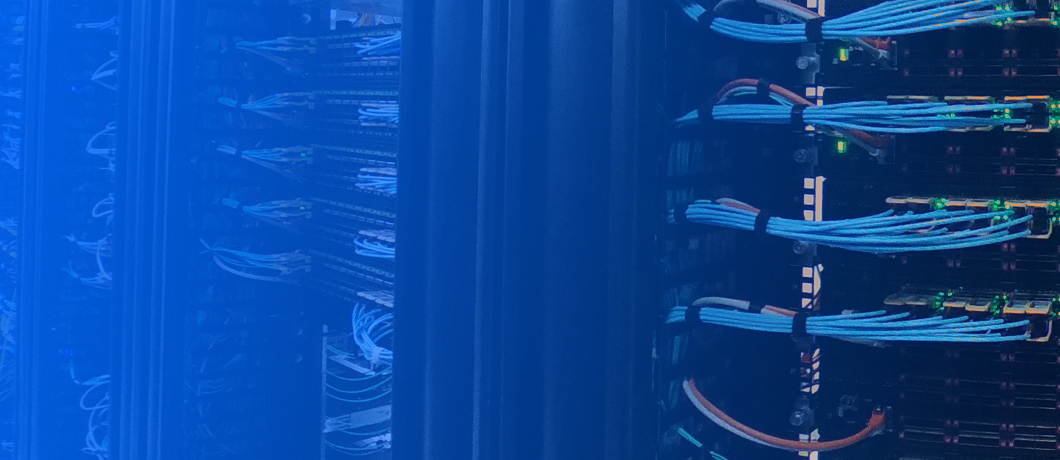|
Getting your Trinity Audio player ready...
|
Now, as a service provider you can choose between two types of routers for your network: one is a Distributed Disaggregated Chassis (DDC) that allows you to build large-scale routing systems with standard white boxes that can be customized and scaled according to your needs, and the other is a traditional chassis-based router that consists of proprietary hardware components locked within a single box, limiting your capacity and flexibility to only a specific chassis size (M, L, or XL). Which one would you pick? Unless you have a very peculiar sense of networking, I’m guessing you would go for the first option, right?
Distributed Disaggregated Chassis (DDC): ideal for service providers
Here, I explain why Distributed Disaggregated Chassis (DDC) is the superior choice for service providers who want to modernize their networks and prepare for future growth. Comparing DDC to traditional chassis-based routers, I will consider them in terms of scalability, cost and operational simplicity. Unless you also have a very peculiar sense of fashion, I think you will see that DDC is the best way to go for building your network.
Understanding Distributed Disaggregated Chassis (DDC)
Distributed Disaggregated Chassis is a modern approach to building large-scale routing systems that delivers similar functionality as traditional monolithic routers but with better scalability and flexibility. Distributed Disaggregated Chassis (DDC) introduces two key innovations: the disaggregation of software and hardware components and the ability of a network operating system to unify dozens of distributed white boxes in order to operate as a single network entity.
Let me explain what these terms mean and why they are important for service providers.
The concept of network disaggregation
Traditionally, a chassis router consists of several components that are locked within a single box, such as line cards, fabric cards and controllers. These components are connected to a single backplane, which limits the number of slots available for each component and the overall capacity of the router. Moreover, these components are usually proprietary and expensive, and they can only be upgraded or replaced by the same vendor.
With DDC disaggregation, we break up the traditional chassis into separate building blocks that can be managed independently. Each building block is a standard white box that contains its own power supplies, fans, CPU, chipsets and protocol software pertaining to its specific function. For example, a ‘line card’ white box is responsible for forwarding traffic, while a ‘fabric card’ white box is responsible for interconnecting line cards. These white boxes are not bound by any chassis limitation and can be fitted onto industry standard racks.
By disaggregating the hardware and software components, service providers can mix and match different vendors and technologies to achieve cost savings and performance optimization. This also enhances resilience by supporting component upgrades or replacements without impacting the entire network.
Network Operating System (NOS) provides a single network entity
The key enabler of Distributed Disaggregated Chassis (DDC) is the network operating system (NOS) that runs on each white box and orchestrates them as a single network entity (a.k.a cluster). The NOS is responsible for managing the configuration, routing protocols, traffic engineering, monitoring and troubleshooting of the entire DDC cluster. While there are many types of operating systems ranging from traditional monolithic OS, modular OS (e.g., IOS-XR and JUNOS), all the way to distributed cloud-native OS (e.g., DriveNets’ DNOS), depending on their functionalities and features, they all support industry-standard specified features for establishing VPNs and security processes while going beyond the standards with proprietary techniques for their own equipment.
DNOS is a cloud-native, distributed networking software, built on containerized microservices, creating a unified, shared infrastructure over a distributed architecture. DNOS can unify dozens of distributed white boxes to operate as a single network entity.
Unified system design
With Distributed Disaggregated Chassis (DDC), the same white boxes are used to build routers of any size across all network domains. Whether it is a core router, aggregation, peering or an edge router, the same cost-effective white boxes are used to scale up or down the capacity according to network demand. This simplifies the network design and reduces the planning, procurement and operational efforts.
For example, to build a fully redundant 153Tbps core router with DDC, 12x ‘line-card’ white boxes can be used, each supporting 100/400G ports, and 9x fabric white boxes.
Need to scale up the capacity to 614Tbps? Simply add 36 more ‘line-card’ white boxes and 27 more fabric white boxes.
By using a unified system design, service providers can build routers of any size with the same two types of white box building blocks.
Benefits of Disaggregated Networking Infrastructure
Distributed Disaggregated Chassis (DDC) offers many benefits to service providers who want to modernize their networks and prepare for future growth. Some of these benefits are:
- Network scalability: DDC enables service providers to scale their networks in a granular and flexible way by adding or removing white boxes as needed. The massive scale is enabled by breaking through the backplane limitations of traditional chassis routers.
- Cost-reductions: DDC reduces both capital expenditures (CapEx) and operational expenditures (OpEx) by using standard white boxes instead of proprietary hardware with hefty premium, by enabling vendor diversity and competition, by simplifying network design and inventory management, by improving power efficiency and by supporting graceful upgrades.
- Simplified operations: DDC simplifies network operations by providing
- a unified system design across all network domains
- a unified interface for external management systems
- a cloud-native NOS that supports orchestration and management of a single network entity cluster.
- enhanced visibility and troubleshooting capabilities.
DriveNets Distributed Disaggregated Chassis meets industry standards
Distributed Disaggregated Chassis (DDC) is not only an open architecture but also meets industry standards, following the best practices and specifications of leading organizations, such as IETF, IEEE and ITU. DDC uses industry standard QSFP-28 and QSFP-DD transceivers and optic cables to interconnect the white boxes. DDC also supports industry standard routing protocols, such as BGP, OSPF, IS-IS, MPLS, SR and others.
By following industry standards, DDC ensures interoperability and compatibility with existing network equipment and systems.
Case Studies: Successful Deployment of Disaggregated Networks
Distributed Disaggregated Chassis (DDC) is not just a theoretical concept but a reality that is gaining acceptance with service providers around the world. Originally defined by AT&T and contributed to the Open Compute Project (OCP) as an open architecture in 2019, several service providers have since adopted or tested DDC in their networks, such as Orange, Telefonica, KDDI, Vodafone, MTN, Turkcell and other service providers.
DriveNets is the leading provider of DDC solutions, with DriveNets Network Cloud serving as the NOS and multiple ODMs vendors, as the hardware partners. DriveNets Network Cloud was among the first vendors to be awarded a Telecom Infra Project (TIP) Requirements Compliant Ribbon for its Distributed Disaggregated Backbone Router (DDBR) extension of OCP DDC.
Future Trends in Disaggregated Networking Technologies
Distributed Disaggregated Chassis (DDC) is a game-changing networking architecture that enables service providers to build large-scale routing systems with better scalability and flexibility than traditional monolithic routers. It is no longer a question of “if” service provider would adopt disaggregation, but “when”.
So if you are still prefer the one-size-fits-all jumpsuit, like traditional chassis-based routers, then it’s time to upgrade your wardrobe. Distributed Disaggregated Chassis (DDC) brings the opportunity to modernize your network and prepare for future growth.
Download White Paper
Which Network Architecture Is Right for You




